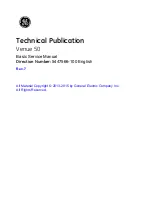Overview
Reverb is the arguably the most common vocal effect.
It can add a spaciousness that softens the abrupt
beginnings and endings of lyric phrases. Many reverb
types are meant to imitate the natural sound of spaces
like churches, clubs and halls but not all. Some reverb
effects are recreations of electro-mechanical effects
meant to imitate real spaces like plates and springs.
Reverbs are made up of early reflections and the longer
reverberant sounds known as the tails. There are usually
controls to control the balance of room level and tail.
Additionally, a small delay can be added between the
dry voice and the reverb signal that adds clarity by
briefly separating the dry voice from its reverb. By far the
most important control for reverb is the level. A single
reverb patch can have a different result for the audience
whether it is mixed quietly or boldly in the mix.
STYLE
Use the soft knob assigned to this parameter to choose
a pre-programmed reverb style you like.
LEVEL
Sets the mix level for the Reverb effect.
WIDTH
Sets the stereo imaging of the Reverb effect. 0% is
mono, 100% is fully stereo.
DECAY
Sets the length of the reverb tail from 10mS to 20
seconds. Note that, due to the complex nature of
Reverb algorithms, a decay time of 4 seconds may sound
quiet different from one style to the next, even when
the rest of the settings are identical.
LO COLOR / HI COLOR
These are preset-frequency filters inserted into the
Reverb feedback path that tailor the low and high
frequency response and decay of the tails. Values toward
-50 will cut response in its respective band and a values
toward 50 increase response.
The Edit Menu: REVERB Tab
60
Summary of Contents for Voicelive 2
Page 1: ...USER S MANUAL Ver 1 2 ...
Page 9: ...Page Head 9 Front Panel 1 2 4 5 6 7 8 9 3 11 10 12 13 14 15 16 17 18 ...
Page 36: ......
Page 104: ......


















